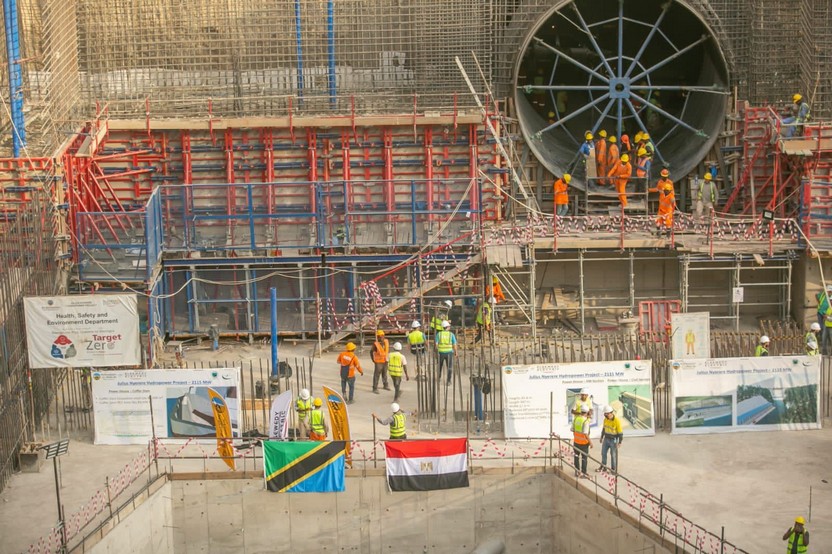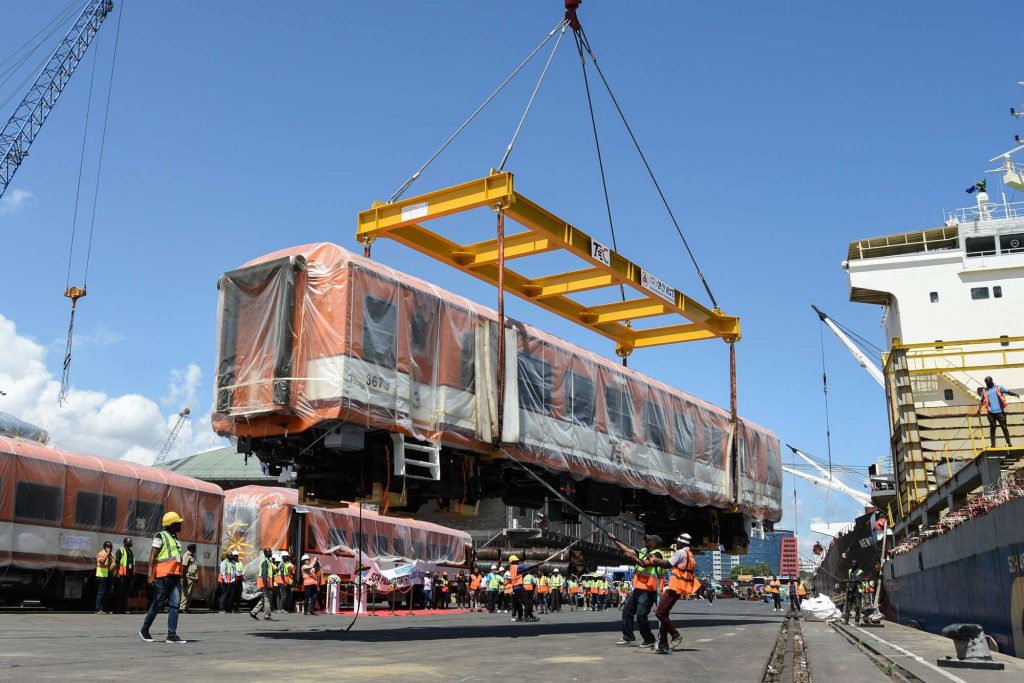Tanzania stands on the brink of an unprecedented transformation as it has implemented its 2022 and 2023 strategic projects and is looking ahead to extend further in 2024. Tanzania has initiated a series of strategic initiatives designed to enhance its economic vitality and uplift its people, and reinforce its cultural essence.
The presence of these strategic projects signals the country’s aspiration to cultivate a holistic model of development that transcends mere infrastructure.
This journey isn’t confined to constructing physical edifices but resonates with the hopes, aspirations, and dreams of every Tanzanian. It paints a picture of a nation ready to harness its capabilities, channel its resources, and carve out a future that mirrors its grand vision. The underlying strength of these projects lies not just in their scale but in the clear strategic thinking, meticulous planning, and concrete data that underpin each one.
However, several challenges surround this picture, things as politics and lack of funds. In this article, let’s explore the strategic projects and how they are keeping the country in the right direction:
Infrastructure & Connectivity: A nation’s prosperity, in many ways, mirrors its infrastructure and connectivity. This philosophy has been embraced for Tanzania, with monumental projects slated for 2022 and 2023 as we delve deeper into this arena and the intertwining of strategic foresight.
The Standard Gauge Railway (SGR)
Spanning over 1,400 km, the SGR aims to connect major economic hubs within Tanzania and further extend to neighbouring countries. Beyond mere transportation, this railway network symbolizes Tanzania’s ambition to be a logistical nucleus in East Africa. The Tanzania Railways Corporation elucidates the potential of the SGR.
Cargo transportation costs are expected to plummet by up to 40%, catalyzing trade and industry. Moreover, the strategic project promises to generate over 10,000 direct jobs during construction. By connecting to Rwanda, Uganda, and the DRC, the SGR becomes a conduit for regional integration, fostering trade relations and socio-economic collaborations.
Upgradation of Key Ports
The ports, particularly Dar es Salaam, have been recognized as the lifelines of Tanzania’s trade. The expansions aim to augment capacity and modernize facilities, ensuring swift cargo processing and reduced dwell times. Investments, to the tune of $400 million for port expansions, are poised to offer tangible returns.
The Ministry of Transport projects that enhanced port capacities can facilitate a 60% surge in cargo handling over the next two years. This translates to increased trade revenues and positions Tanzania as a preferred maritime gateway in the region. Modern port infrastructures aren’t just about scale and efficiency.
The government, aligning with global sustainability standards, integrates eco-friendly technologies and practices, ensuring reduced carbon footprints and minimal environmental disruptions.
Road Connectivity
Recognizing the criticality of road networks for domestic trade and mobility, Tanzania has initiated significant highway projects. The aim is to connect agricultural hinterlands to urban markets, ensuring seamless movement of goods. But also to ease transportation in urban areas to open up for more economic development.
As per the Ministry of Works, Transport and Communication, for every 100 km of new roads, there’s an anticipated 5% increase in regional trade. Moreover, enhanced road connectivity fosters social cohesion, enabling easier access to education, healthcare, and employment opportunities.
Energy Sourcing Progress: Energy lies at the crossroads of economic development, societal progress, and environmental stewardship. For Tanzania, the years 2022 and 2023 are pivotal as the nation endeavours to redefine its energy matrix, catering to growing domestic demands while remaining environmentally responsible. A data-driven probe into this sector reveals the contours of Tanzania’s energy vision.
Julius Nyerere Hydropower Station
Slated as one of Africa’s most significant hydropower ventures, the Julius Nyerere Hydropower Station, located along the Rufiji River, promises an installed capacity of over 2,100 MW. According to the Tanzania Electric Supply Company (TANESCO), this is among of the strategic projects that will catapult the nation’s electricity generation capacity, potentially reducing dependency on non-renewable sources by over 50% by 2023.
Moreover, this hydropower station is anticipated to cater to approximately 30% of Tanzania’s total electricity demand upon completion. A reliable power supply can substantially reduce business overheads.
Reports from the Ministry of Energy suggest that with the new hydropower facility, industrial electricity costs could potentially decline by up to 25%, stimulating manufacturing and industrial activities.

Renewable Energy Foray
With regions like Kigoma and Singida boasting abundant sunlight and wind respectively, Tanzania is poised to harness these renewable resources. Data from the Renewable Energy
Association of Tanzania projects that by 2023, solar and wind could jointly contribute up to 1,500 MW to the national grid. However, these potential and alternative energy generation means are not yet maximized. Off-grid solutions are being promoted, especially in rural landscapes.
Statistics indicate that decentralized renewable energy systems have the potential to electrify over 2 million Tanzanian households. Tanzania’s geothermal potential, especially in regions around the East African Rift Valley, is estimated to be around 650 MW. Preliminary exploration activities have been initiated, and if harnessed, geothermal energy can provide a stable, baseload power source for the nation.
Natural Gas Reserves
With its significant natural gas reserves estimated at over 57 trillion cubic feet, Tanzania strategically positions itself as a gas-based economy. Reports suggest that by 2023, natural gas will cater to over 40% of Tanzania’s power generation needs, with additional surpluses earmarked for export. Gas projects like those in the Lindi and Mtwara regions have enhanced energy security and spurred local employment, infrastructure development, and skill transfer.
Agriculture: This remains a vital cornerstone for Tanzania, offering sustenance and avenues for economic growth. In recognizing the importance of agriculture to its future, Tanzania is poised to implement transformative strategies aimed at improving and developing the sector to make it more efficient with technology:
Modern Agricultural Zones
Set against the backdrop of Tanzania’s lush landscapes, these Modern Agricultural Zones emerge as symbols of innovation and growth. They are not merely plots of cultivated land but hubs that seamlessly meld technology with time-tested farming traditions. With a clear focus on integrating technological advancements and modern farming methodologies, these zones are envisioned to elevate agricultural outputs dramatically.
By infusing these zones with the latest in agro-tech and innovative farming practices, the nation sets its sights on a bold target: a surge in agricultural productivity by 30% in 2023. This initiative resonates deeply with Tanzania’s overarching ambition of fortifying its food security landscape while augmenting its global export market position.
Irrigation Infrastructure
Despite boasting vast stretches of arable terrains, a mere 6% of Tanzania’s cultivable land benefits from irrigation, as per recent data from the Ministry of Agriculture. This limited reach of irrigation systems undoubtedly acts as a bottleneck, constraining the land’s true agricultural output potential.
To remedy this, Tanzania has laid out a pragmatic and ambitious blueprint. The goal is clear: elevate the percentage of irrigated arable land from the current 6% to an impressive 15%. Achieving this will not only safeguard crops against unpredictable rain patterns but also promises to significantly amplify crop yields, paving the way for a more prosperous and food-secure nation.
Digital Transformation: In a world where digital realms are becoming as vital as the physical, The nation’s vision isn’t just about technological adoption but crafting an environment where technology investments are encouraged. Here’s a closer dive into the nation’s strategic endeavors in its quest to become a digital powerhouse:
National Broadband Expansion: Internet connectivity isn’t a luxury; in today’s age, it’s a lifeline. Recognizing this, the Tanzania Communications Regulatory Authority has provided insights into the current state of internet connectivity. While the nation has made significant strides in this arena, there’s still a journey ahead.
Aiming high, the objective is to achieve an impressive internet penetration rate of 85% by the close of 2023. This isn’t just about getting people online; it’s about creating an environment conducive to e-governance, fostering a new generation of digital entrepreneurs, and, most importantly, bridging the vast digital divide.
By ensuring widespread and equitable internet access, Tanzania envisions a future where opportunities, knowledge, and resources are just a click away for its citizens.
Tech Incubation Centers: In the global digital landscape, startups often emerge as frontrunners of innovation, challenging conventions and crafting solutions for modern-day challenges.
Realizing the potential of these dynamic entities, Tanzania is set on creating fertile grounds for their growth. By establishing multiple tech incubation centres across its bustling cities, Tanzania is sending a clear message: the nation is ready to embrace and nurture innovative ideas.
Tourism & Conservation: In an era where sustainability is more than a buzzword, the country is gearing up to intertwine its tourism endeavours with conservation initiatives. Here’s how Tanzania is shaping its future in the realms of tourism and conservation:
Sustainable Tourism: The global tourist community is witnessing a paradigm shift. Modern travellers, driven by an awareness of environmental implications, are increasingly leaning towards destinations that offer eco-friendly experiences. The Tanzania Tourist Board recognizes this and has presented data supporting the growing trend of eco-tourism.
Aligning with these global sentiments, Tanzania is enhancing its existing tourist attractions and infusing sustainability at its core. The ambitious goal is clear: a substantial increase in tourist inflow by 25% by 2024. With a focus on sustainable tourism, Tanzania seeks to offer a blend of breathtaking experiences without compromising the ecological balance.
Wildlife Corridor Protection: Wildlife corridors are more than just pathways for animals; they are essential lifelines that ensure the continuity and vitality of diverse species. These corridors play a pivotal role in preventing habitat fragmentation, allowing wildlife to migrate, find food, and mate, thus ensuring numerous species’ survival and genetic diversity. Investing in protecting these corridors isn’t just an ecological and economic imperative.
As Tanzania rolls out its strategic initiatives, it’s evident that the nation is shaping more than just infrastructure—it’s moulding its future. These aren’t mere projects but symbols of a forward-thinking Tanzania, merging immediate needs with long-term visions of inclusive prosperity. Each endeavour, rooted in data and strategic clarity, underscores Tanzania’s commitment to a holistic and sustainable future.


do you have an updated current list of specific projects we could look at progressing ?